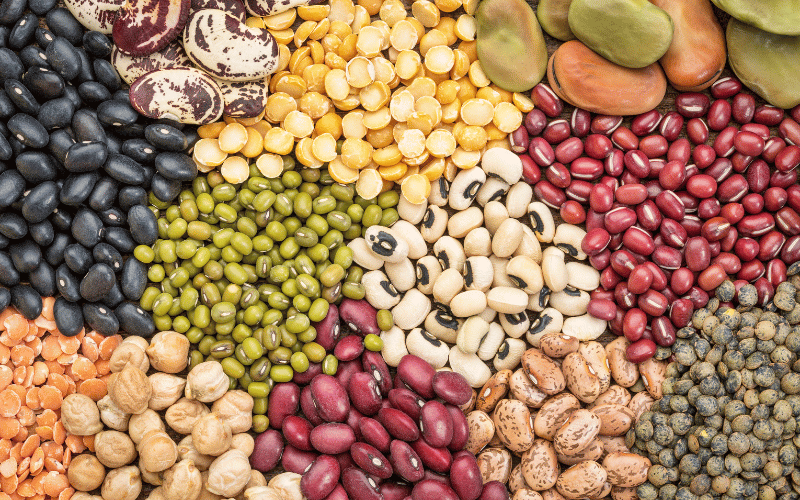Food 6: Legumes

Legumes, such as beans, lentils, and chickpeas, offer a remarkable combination of fiber, protein, and essential nutrients, making them an excellent choice for those managing insulin resistance. One of the standout features of legumes is their high fiber content. Fiber plays a critical role in regulating blood sugar levels by slowing down the absorption of carbohydrates. This process results in a more gradual increase in blood sugar levels, rather than the sharp spikes that can exacerbate insulin resistance. Additionally, the protein in legumes contributes to feelings of fullness, aiding in weight management, which is a key aspect of controlling insulin resistance. Moreover, legumes are packed with vital nutrients like magnesium, potassium, and iron, which are essential for overall health and well-being.
are uniquely beneficial for individuals with insulin resistance due to their low glycemic index. This property means that they have a minimal impact on blood sugar levels, a crucial aspect of managing insulin sensitivity. Regular consumption of legumes is linked with improved glycemic control, which is vital in reducing the risk of developing type 2 diabetes. The fiber in legumes also plays a role in gut health, as it feeds beneficial gut bacteria, leading to improved digestion and overall health. Furthermore, the antioxidants found in legumes can help combat oxidative stress, which is often heightened in individuals with insulin resistance.
Integrating legumes into one’s diet can be both enjoyable and diverse. They can be the main ingredient in dishes such as soups, stews, and salads, or used as a meat alternative in recipes like burgers and tacos. The versatility of legumes makes them a fantastic ingredient for experimenting with various cuisines, from Mediterranean to Mexican. Cooking legumes with herbs and spices can enhance their flavor, making them more appealing, especially to those who might be new to incorporating these foods into their diet.
While legumes are highly nutritious, it’s important to consider portion sizes, as they are relatively high in carbohydrates. A balanced approach would be to pair them with non-starchy vegetables and lean proteins for a well-rounded meal. Additionally, for those who are sensitive to the gastrointestinal effects of legumes, methods like soaking and rinsing dried legumes before cooking can help reduce their content of gas-producing compounds.
Legumes are a crucial component of a diet aimed at managing insulin resistance. Their low glycemic index, high fiber, and nutrient-rich profile make them an invaluable food choice for improving insulin sensitivity and contributing to overall health. By incorporating legumes into your diet, you’re taking a significant step towards controlling insulin resistance and enhancing your body’s ability to manage blood sugar levels effectively. (6)